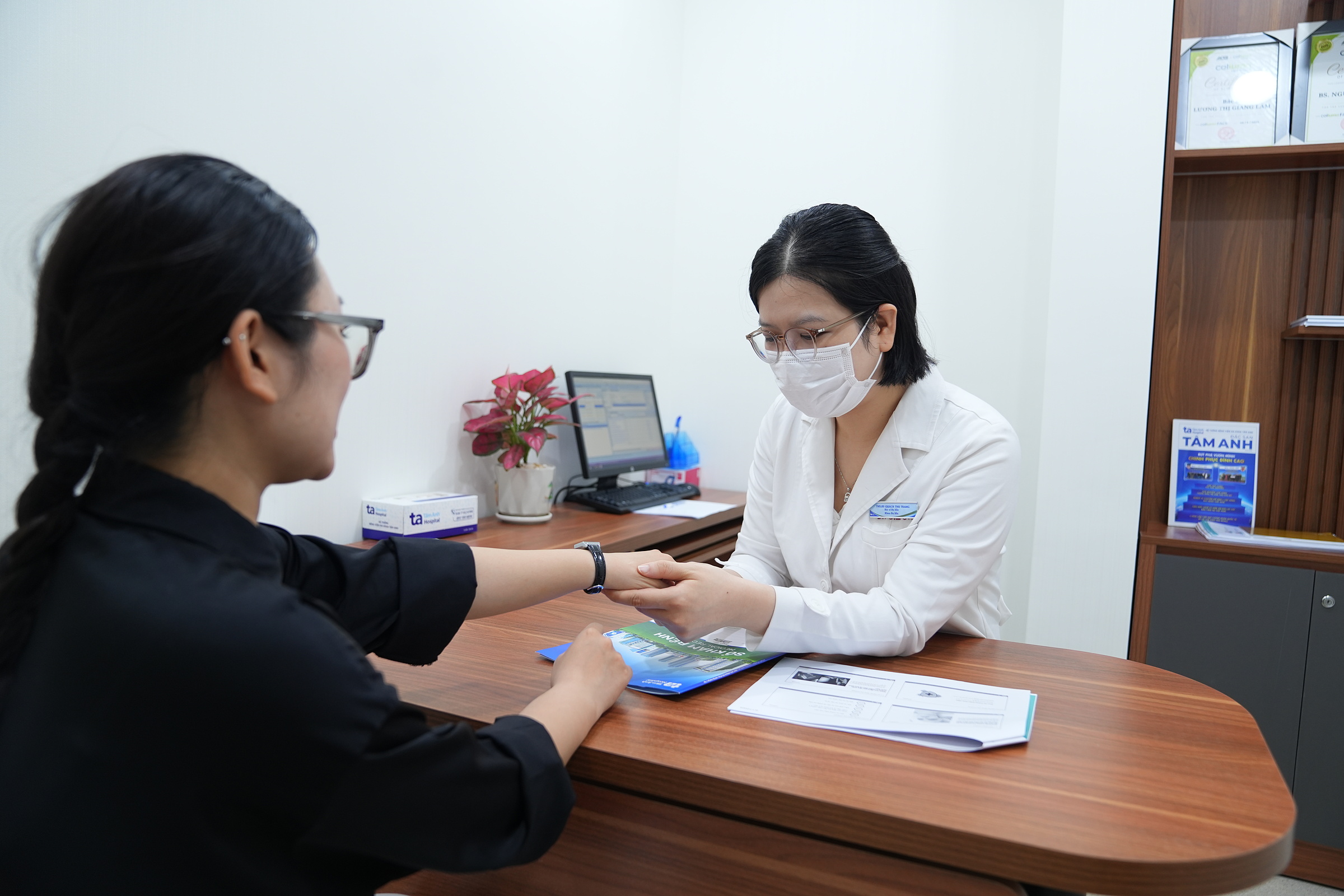Motorcycle exhaust burns, often occurring on the hands and feet, are a common injury caused by contact with hot metal surfaces. These burns can result in pain, blisters, swelling, and redness. Dr. Nguyen Thi Ngoc Yen, Head of Dermatology at Tam Anh General Hospital in Hanoi, explains that the healing time for exhaust burns depends on several factors: the severity of the burn, first-aid measures, the individual's resistance, nutrition, and wound care. Minor burns usually heal quickly and don't scar if treated and cared for properly. Without proper care, however, the wound can easily become infected, leading to skin necrosis or unsightly dark or raised scars.
Dr. Yen advises immediate first aid for burns to minimize damage and prevent complications. The first step is to cool the burned area under clean, cool running water (16-20°C) for 15-20 minutes to reduce tissue damage and pain. This is most effective within the first 30 minutes after the burn. Avoid using ice water, ice, or ice packs directly on the burn, as this can lower body temperature, constrict blood vessels, and worsen the injury.
Clean the burn with a diluted antiseptic solution, saline, or medical alcohol if the burn is minor. Then, gently cover the wound with sterile gauze, avoiding tight bandaging to prevent further skin damage.
For burns with blisters covering a significant area, apply a loose gauze bandage. Avoid breaking the blisters, as this can lead to infection, increased pain, and scarring. Hydrocolloid bandages, specifically designed for burn care, can promote faster healing, reduce pain, and minimize scarring.
 |
A dermatologist consults with a patient. Photo: Tam Anh General Hospital |
A dermatologist consults with a patient. Photo: Tam Anh General Hospital
Change the dressing and clean the burn daily to remove dirt, bacteria, and dead skin cells, reducing the risk of infection and promoting healing. Moisten the old bandage before removing it and replace it with a new one. Clean the wound gently with saline or a mild antiseptic solution, taking care not to break any blisters. Dry the wound with sterile cotton. Prevent young children from touching or scratching the burn.
Apply a burn ointment containing antibacterial and moisturizing agents, such as silver sulfadiazine or panthenol, following a doctor's instructions. This will soften the skin and aid in the healing process. Pain relievers can be used if necessary.
Avoid using home remedies like fish sauce, soy sauce, oils, egg yolks, tobacco, snake fat, toothpaste, or unverified traditional medicines. These methods may provide superficial cooling but don't address the underlying tissue damage. They are ineffective in reducing burn severity and can increase the risk of infection and skin necrosis.
A nutritious diet helps the body recover, accelerates healing, and boosts the immune system. Drink plenty of water. Limit consumption of fried foods, sugary foods, canned foods, fast food, carbonated drinks, and alcohol.
Regularly massage the affected area to prevent the formation of hard or contracted scars. Avoid picking at scabs or new skin as the burn heals, as this can cause deeper damage and increase the risk of raised scars. Consult a doctor about using sunscreen, scar prevention cream, or antibiotic ointment once the skin begins to close.
During the skin regeneration process, aloe vera gel or turmeric can be applied to moisturize the burned area and promote new skin growth. Prevent the wound from drying out and peeling too quickly, as this can lead to hard scars. Protect the new skin from direct sunlight, as UV rays can darken the healed area and cause dark scars.
Monitor the burn's progress. If the skin becomes swollen, raised, or unusually dark after a few weeks, consult a dermatologist for early intervention.
Seek immediate medical attention for second-degree or higher burns, burns in sensitive areas like the face or genitals, deep burns larger than 3-5 cm, burns with multiple blisters, or minor burns showing signs of infection (swelling, pain, discharge), fever, or severe pain. A doctor may prescribe medication, specialized dressings, skin grafts, or physical therapy for deep burns. Children, individuals with underlying health conditions, and the elderly require close medical supervision if burned.
Trinh Mai












